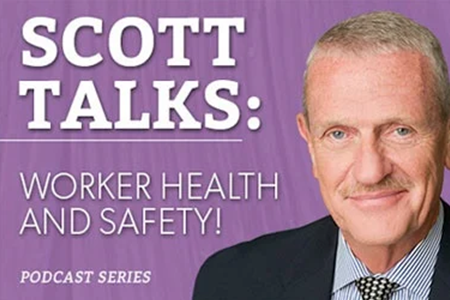What is Chemical Exposure Monitoring?
Exposure monitoring is performed by having employees that may be exposed to the hazardous chemical wear a sampling device, generally a battery-operated air sampling pump, for their entire work shift so their exposure can be accurately measured. The idea of monitoring for the full shift is to collect ALL of their exposure during the time that they are paid, from the highest exposure of the day to the lowest as we are trying to measure a Time Weighted Average (TWA) exposure so every minute counts.
Depending on your place of work—be it a production line or operating room—there are chemicals used in everyday processes and procedures that without proper exposure monitoring, it is impossible to determine if there is a harmful exposure. Also, all chemicals do not have to come in a bottle or can. Grinding or chipping concrete can result in silica exposure. Welding can generate a significant exposure to a variety of metals depending upon what type of welding is being performed. Workers making printed circuit boards can be exposed to a variety of chemicals from solvents used to clean the boards and flux and solder used to attach components to the boards.
If you are not sure what chemicals may be present in your place of business, a qualified Industrial Hygienist with significant experience should evaluate what may be present and help you develop a proper exposure monitoring plan.
What are the Regulations for Chemical Exposure?
There are certain chemicals that OSHA dictates that you perform exposure monitoring to establish a baseline of exposure that you use as a “starting point” in the evaluation of a hazard. A few of these chemicals are Lead, Cadmium, Silica, Beryllium, Arsenic, Chromium (VI), Benzene, and Formaldehyde.
OSHA has exposure limits for some 500 chemicals but there are thousands of additional chemicals in use and new ones are being invented every day. Not all have exposure limits. There are other groups and Associations that have determined exposure limits or guidelines for many additional chemicals, however, most of these limits are recommendations and not Law. Only those regulated by OSHA are considered to be “speed limits” which must be complied with but our opinion is that there are other limits/guidelines that should be considered to make sure you are providing a safe workplace for your employees.
How to Address Chemical Exposure Monitoring
To learn more about our Health & Safety Consulting and how we handle Chemical Exposure, schedule a free consultation by filling out the form below:


